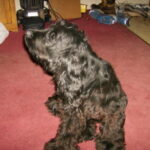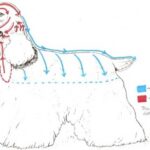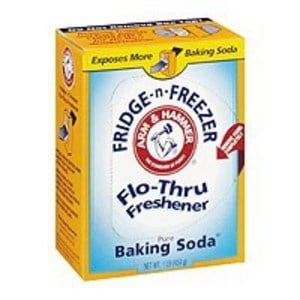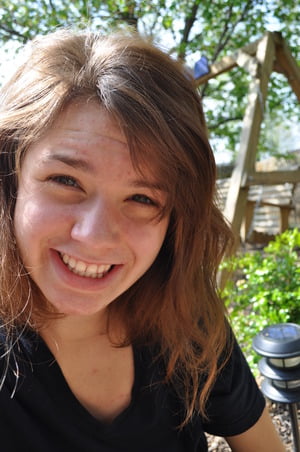Although it is difficult to determine exactly when the type of dog we call “spaniels” came into being, written records exist as far back as the 14th century. They are commonly believed to have originated in Spain – hence the term spaniel – but some mention of early spaniels has also been found in Switzerland and France.
As members of the early spaniel family gradually made their way across Europe to England, enthusiast there began to breed for specific traits. It was mainly in England that separation of the “generic spaniels” into the breeds we know and love today occurred.
Today there are ten recognized breeds of Spaniels: the American Water Spaniel, the Brittany, the Clumber, the English Cocker, the English Springer, the Field, the Irish Water, the Sussex, and the Welsh Springer. The Water Spaniels and the Brittany show some signs of outcrossing with other breeds, but the others appear to have been bred from within the spaniel family itself.
In the early days of separating the breeds by applying a “subtitle” (i.e., Cocker, Brittany, etc), it was quite common to have more than one type appear in the same litter. The only distinguishing factor at the time seemed to be size.
As dog shows came into being, and refinements were bred into the various strains, the “subtitles,” or “prefixes,” stuck, and breed by breed each type was separated. It was not until 1883 that Cockers would be given their own classification, and it would be another ten years before they were granted status as a distinct breed in the English Stud Book.
During this same period, the first Cocker Spaniels began to “emigrate” to America, and it was the famed Obo dogs which would set the pattern for what would later become known as the American Cocker Spaniel.
In 1924, the Cocker Spaniel Field Trial Club began hosting trials for the breed. Even today, the ancient instincts for the hunt can be found in your very own couch potato! Generally, with a bit of training and lots of praise, it takes very little time to turn these wonderful family pets into equally great hunting companions.
The usual method of hunting with a Cocker Spaniel is to allow him to “quarter” the field in front of your gun, gradually covering all of the ground in gun range. He should accomplish this quickly and enthusiastically. When he has flushed his quarry, the Cocker should instantly freeze into place. Even more preferable is a Cocker that has been trained to drop to the ground immediately after flushing, so as to be safely out of the field of fire.
The Cocker Spaniel is the smallest member of the Sporting Group. He is a sturdily built, solid little dog with a short body, strong limbs, and a well-refined head.
Like many other working breeds, the Cocker should be capable of considerable speed and stamina, as well as possessing an open, merry temper with no sign of shyness or timidity.
Cocker Spaniels are found in may color varieties: Black; Any Solid Color Other than Black (ASCOB); and Particolor. The Black variety includes solid black dogs as well as those with tan “points.” This tan color can range in shade from light cream to a dark reddish brown, but the total amount of color should be less than 10%.
Particolors are dogs whose coats contain two or more well defined colors, one of which must be white, including dogs with tan points.
When it comes to grooming, Cocker Spaniels take a bit of extra work. Most people have seen at least a glimpse of a Cocker in full “show coat,” and it is indeed a beautiful sight. The show coat will require brushing at least once a day, though, and usually more if your dog spends any length of time outside.
With the ever-increasing number of professional dog grooming salons, however, another option exists for the more down-to-earth Cocker Spaniel owner. If you are not adamant about having your dog look as if he is about to step into the ring at Westminster any moment, it is a simple matter to have your pet clipped on a regular basis to a more convenient length. We had a Cocker for many years, and kept her comfortably trimmed in just this fashion, allowing her coat to grow slightly longer in the winter for extra warmth.






